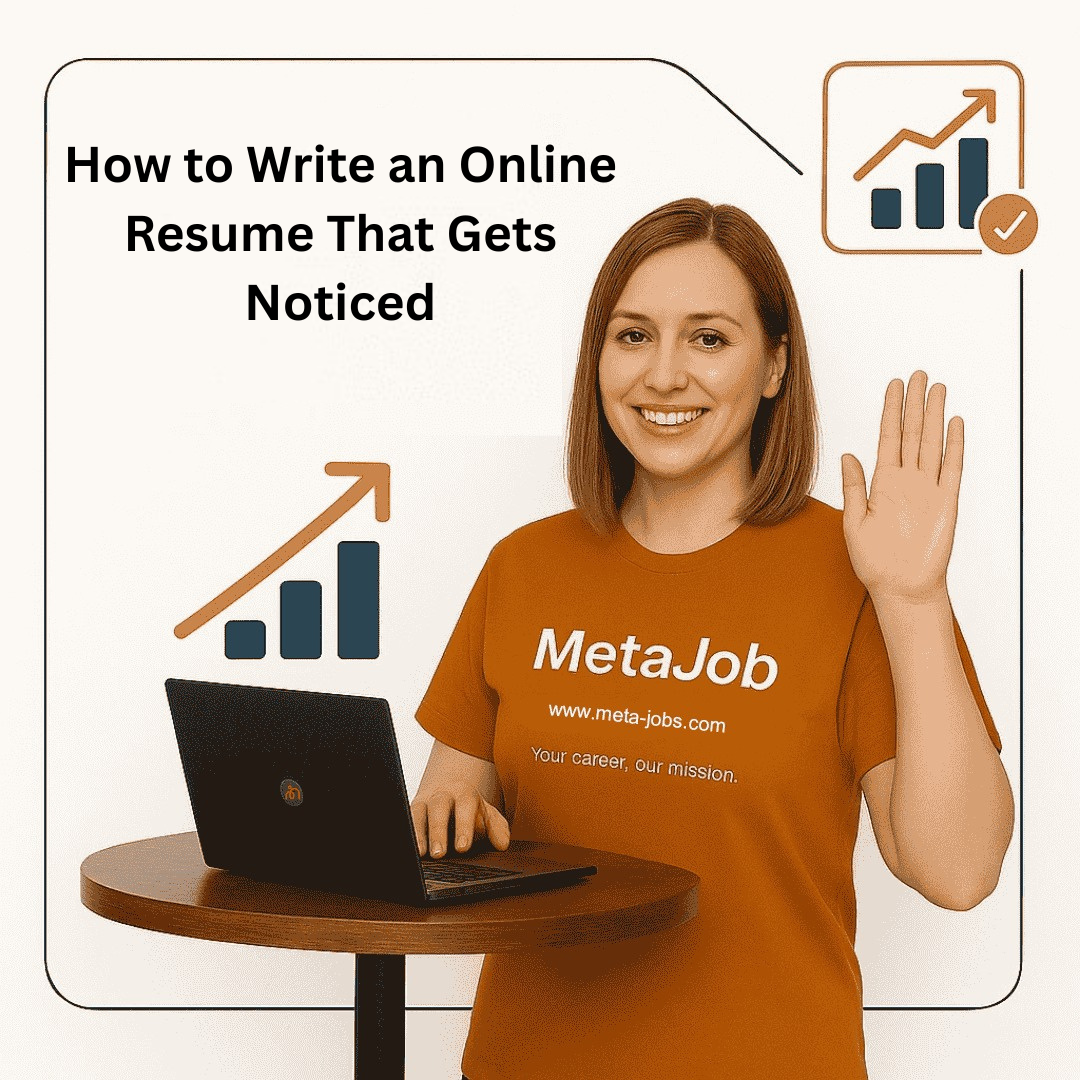

In today’s digital hiring landscape, simply uploading a resume is no longer enough. Companies use Applicant Tracking Systems (ATS), AI-powered recruiting tools, and keyword algorithms to filter applications long before a human recruiter reviews them. That means your resume needs to do two jobs at once:
Pass the ATS screening by using the right formatting and keywords.
Impress human recruiters with clear, results-driven storytelling.
This guide will walk you through everything you need to know about writing an online resume that gets noticed in 2025—from keyword optimization and formatting to tailoring content for specific roles. Whether you are a graduate, mid-career professional, or executive, these strategies will help you stand out in the crowded job market.
In 2025, more than 90% of companies use ATS software to manage job applications. Recruiters receive thousands of resumes for a single role, making it impossible to manually review each one. Instead, resumes are scanned, ranked, and filtered before reaching the hiring team.
Additionally, many hiring decisions begin with LinkedIn searches or resumes uploaded to job boards like MetaJobs. If your resume isn’t optimized for online visibility, you risk being overlooked—even if you’re highly qualified.
Recruiters search for candidates using keywords, and ATS systems are programmed to scan for them. If your resume lacks these terms, it may never appear in search results.
How to Find Keywords:
Analyze job postings for repeated phrases.
Look at the “Required Skills” and “Preferred Qualifications” sections.
Research industry jargon and certifications.
Example:
For a Digital Marketing Specialist role, keywords might include:
SEO, PPC, Content Marketing, Google Analytics, HubSpot, ROI.
ATS systems struggle with complex formatting. What looks attractive to you may appear as unreadable code to the software.
Best Practices:
Stick to simple fonts (Calibri, Arial, Times New Roman).
Use bullet points, not tables or graphics.
Save in .docx or PDF (if permitted).
Avoid headers/footers for contact info.
Recruiters want proof of your impact. Replace vague statements with quantifiable achievements.
Weak: “Responsible for managing projects.”
Strong: “Managed 8 client projects simultaneously, delivering 95% on time and under budget.”
Metrics to use:
% growth
Revenue saved/generated
Time reduced
Customer satisfaction ratings
Team size managed
Your summary acts as a 30-second elevator pitch for recruiters.
Structure:
Years of experience
Core skills/industries
Career achievements
Goals for the next role
Example:
“Project manager with 10+ years leading cross-functional teams in tech and finance. Expert in Agile, Scrum, and Lean Six Sigma. Known for delivering multimillion-dollar projects on time and under budget.”
One-size-fits-all resumes rarely succeed. Tailor your resume to each role by:
Using keywords directly from the posting.
Reordering your skills based on what’s most relevant.
Highlighting specific achievements that match the employer’s needs.
Employers in 2025 are increasingly seeking future-proof skills.
Top In-Demand Hard Skills:
Artificial Intelligence tools
Data analysis
Cybersecurity
Cloud computing
Digital marketing
Top Soft Skills:
Problem-solving
Adaptability
Communication
Leadership
Collaboration
Your resume should follow a simple, predictable structure:
Header – Name, phone, email, LinkedIn
Professional Summary – 3–4 lines
Skills Section – Hard + soft skills
Experience Section – Reverse chronological order
Education Section – Degrees, certifications
Additional Sections – Awards, publications, volunteer work
Resumes uploaded to MetaJobs or LinkedIn should be optimized for searchability.
Add keywords to your job titles and skills.
Use a professional headshot on LinkedIn.
Keep your MetaJobs profile consistent with your resume.
Recruiters typically scan resumes in under 7 seconds.
Entry-level: 1 page
Mid-career: 1–2 pages
Executives: 2 pages
Typos or errors can cost you interviews.
Steps:
Use tools like Grammarly or Hemingway.
Run your resume through an ATS simulator to check keyword optimization.
Ask a mentor or colleague to review it.
Now let’s expand each resume section with examples, tips, and strategies.
✔ Be concise (3–4 sentences).
✔ Highlight achievements.
✔ Use industry-specific keywords.
✘ Don’t write an objective statement (“Looking for a role in…”).
✘ Don’t list generic skills without context.
Example for a Software Engineer:
“Full-stack developer with 6 years’ experience in Python, JavaScript, and cloud platforms. Designed scalable applications serving 100K+ users. Skilled at Agile collaboration and passionate about building innovative digital products.”
Group skills into categories for easy readability:
Technical Skills: Python, SQL, AWS, Kubernetes
Marketing Skills: SEO, PPC, Content Strategy
Soft Skills: Leadership, Problem-Solving, Teamwork
Use the STAR Method (Situation, Task, Action, Result).
Example:
Company: ABC Marketing – Digital Marketing Manager (2020–2024)
Increased organic traffic by 60% in one year using SEO strategies.
Managed $200,000 annual advertising budget, reducing costs by 15%.
Trained and mentored a team of 5 junior marketers.
Keep it simple but relevant.
Degree, University, Year
Certifications (PMP, Google Analytics, AWS Certified)
Online learning credentials (Coursera, LinkedIn Learning, Udemy)
Volunteer Work: Demonstrates soft skills and values.
Projects: Great for students or career changers.
Languages: Important for international roles.
Awards & Recognition: Adds credibility.
Start bullet points with power verbs: Led, Developed, Implemented, Increased, Reduced.
Some companies use AI-driven video interviews. Practice answering questions clearly and confidently.
Your LinkedIn profile should mirror but not duplicate your resume. Add depth (projects, endorsements).
Typos
Overly long paragraphs
Outdated email addresses (e.g., Hotmail)
Irrelevant jobs
Research the Job Posting
Select the Right Resume Format (chronological, functional, hybrid)
Write a Strong Summary
List Relevant Skills
Detail Work Experience With Results
Add Education and Certifications
Proofread and Optimize
Upload to MetaJobs and LinkedIn
❌ Using the same resume for every job.
❌ Writing vague bullet points.
❌ Forgetting to proofread.
❌ Overloading with buzzwords.
❌ Leaving out contact information.
Writing an online resume that gets noticed in 2025 requires strategy, optimization, and clarity. By using the right keywords, keeping formatting ATS-friendly, quantifying achievements, and tailoring each application, you’ll dramatically increase your chances of landing interviews.
Platforms like MetaJobs make it easier to showcase your resume online, connect with employers, and stay ahead in the digital hiring game. Start applying these tips today and take the next step toward your dream career.